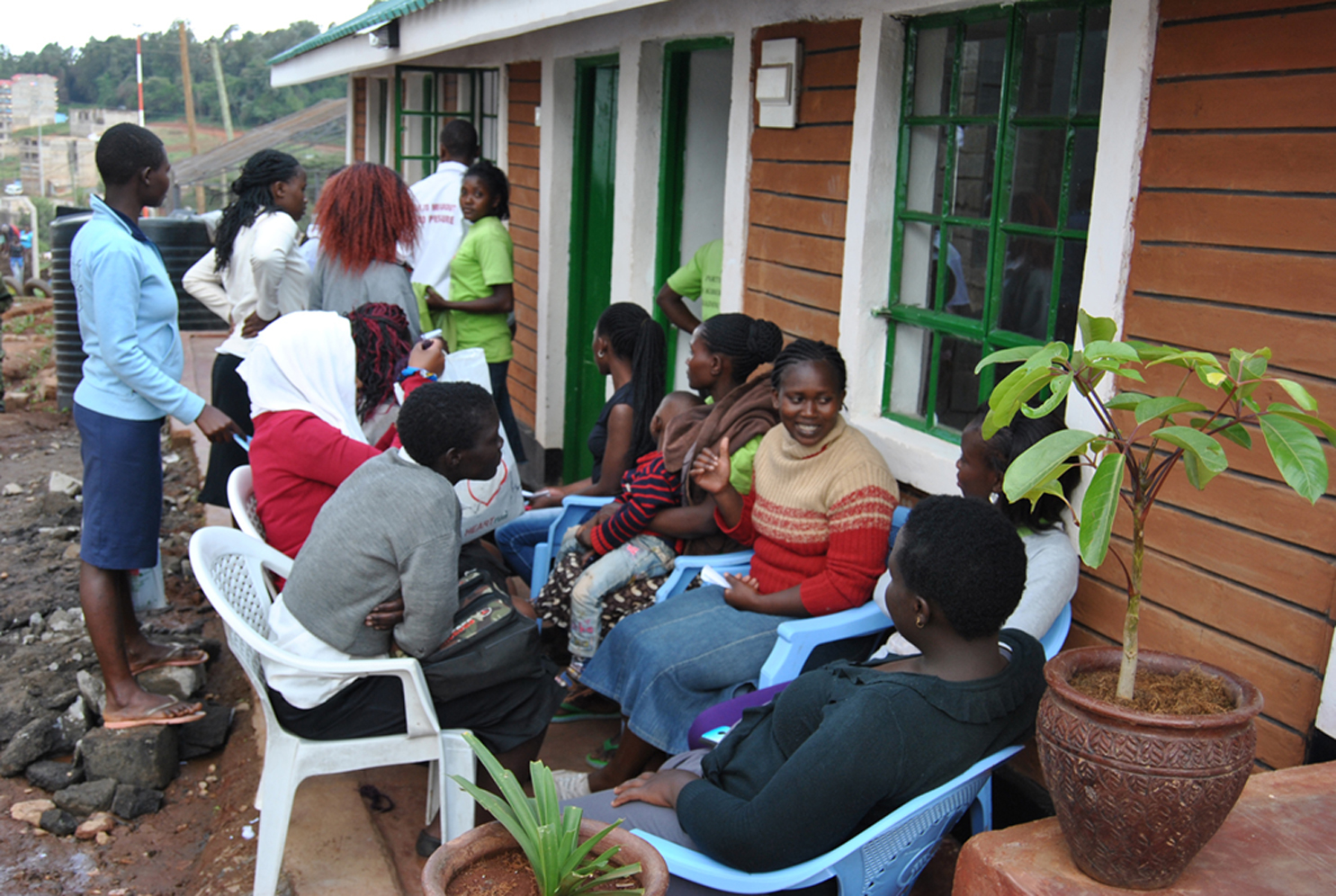
Introduction
Adolescents and young people represent an increasing share of people living with HIV globally. According to UNICEF, 590,000 young people between the ages of 15 to 24 were newly infected with HIV in 2017, yet recent data indicate that HIV testing rates among adolescents are low. In Eastern and Southern Africa, the region most affected by HIV, only 17 percent of adolescent boys aged 15-19 and 23 percent of adolescent girls of the same age have been tested for HIV in the past 12 months and received their results. Testing rates in South Asia and West and Central Africa and are even lower.
HIV disproportionately affects adolescent girls and young women (AGYW) in low- and middle-income countries (LMICs) due to a range of social and structural factors AGYW are vulnerable to HIV due to social and cultural factors, including early sexual debut, early and forced marriage and childbirth, sexual relationships with older men, economic pressure for transactional sex, and restricted ability to negotiate condom use. Structural factors, such as a lack of youth-friendly health services and less access to education, also contribute to girls’ vulnerability to HIV.
AGYW are a priority population that would benefit from HIV index testing to ensure early linkage to care and treatment services. Recently, partner notification (PN) linked with HIV index testing has also been recommended for AGYW in LMICs to support global efforts to reach 95-95-95 goals and achieve epidemic control. HIV PN for AGYW is also seen as an entry point for engaging adolescent boys and young men, populations that are harder to reach, in HIV services through PN. However, little is known about the potential social harms that AGYW may experience due to HIV PN.
While HIV index testing and partner notification (PN) services have the potential to reach adolescent girls and young women (AGYW) aged 15-24 and their sexual partners in need of HIV testing services (HTS), the implementation of PN requires careful consideration to minimize potential social harms for AGYW who may be experiencing violence or stigma, fear violence or stigma, or who may have acquired HIV as a result of violence. Paramount among considerations regarding the roll-out of HIV PN for AGYW is ensuring voluntarism, with informed consent and the explicit right to decline.
YouthPower Learning reviewed the evidence on social harms linked with HIV index testing and PN, including intimate partner violence (IPV) and stigma. Using the lens that a holistic positive youth development approach can help to address the barriers and challenges associated with HIV PN among AGYW, we synthesized the potential risks to AGYW in low- and middle- income countries (LMICs) of HIV PN among this vulnerable population.
RESOURCES
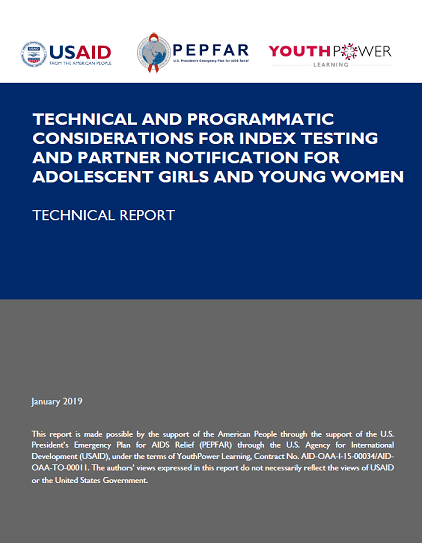 Technical and Programmatic Considerations for Index Testing and Partner Notification for Adolescent Girls and Young Women: Technical Report
Technical and Programmatic Considerations for Index Testing and Partner Notification for Adolescent Girls and Young Women: Technical Report
HIV index testing with partner notification (PN) is the testing strategy with the highest positivity rate. Such a strategy is important at this stage of the HIV epidemic where many countries have reached or are near to reaching the global target of 90% of people living with HIV knowing their status by 2020 and other testing approaches have decreasing positivity rates. While HIV index testing and PN services have the potential to reach adolescent girls and young women (AGYW) aged 15-24 and their sexual partners in need of HIV testing services (HTS), the implementation of PN requires careful consideration to minimize potential social harms for AGYW who may be experiencing violence or stigma, fear violence or stigma, or who may have acquired HIV as a result of violence. Paramount among considerations regarding the roll-out of HIV PN for AGYW is ensuring voluntarism, with informed consent and the explicit right to decline, as expressly stated in the HIV Self-Testing and Partner Notification guidance document published by the World Health Organization (WHO).
YouthPower Learning reviewed the evidence on social harms linked with HIV index testing and PN, including intimate partner violence (IPV) and stigma. Using the lens that a holistic positive youth development approach can help to address the barriers and challenges associated with HIV PN among AGYW, we synthesized the potential risks to AGYW in low- and middle- income countries (LMICs) of HIV PN among this vulnerable population.
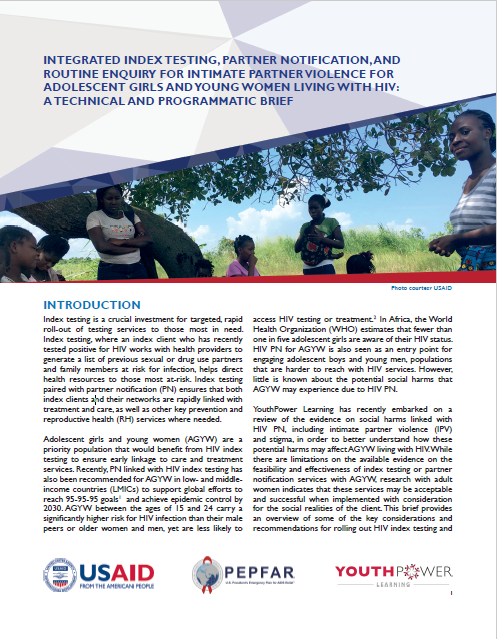 Integrated Index Testing, Partner Notification, and Routine Enquiry for Intimate Partner Violence for Adolescent Girls and Young Women Living with HIV: A Technical and Programmatic Brief
Integrated Index Testing, Partner Notification, and Routine Enquiry for Intimate Partner Violence for Adolescent Girls and Young Women Living with HIV: A Technical and Programmatic Brief
This technical and programmatic brief summarizes the evidence on social harms linked with HIV index testing and PN, including intimate partner violence (IPV) and stigma. The brief also summarizes programmatic recommendations for implementing HIV PN for AGWY in LMICs. While PN services have the potential to reach AGYW and their sexual partners in need of HIV testing services, the implementation of PN needs careful consideration to minimize potential social harms for AGYW who may be experiencing violence or stigma, fear violence or stigma, or who may have acquired HIV as a result of violence.
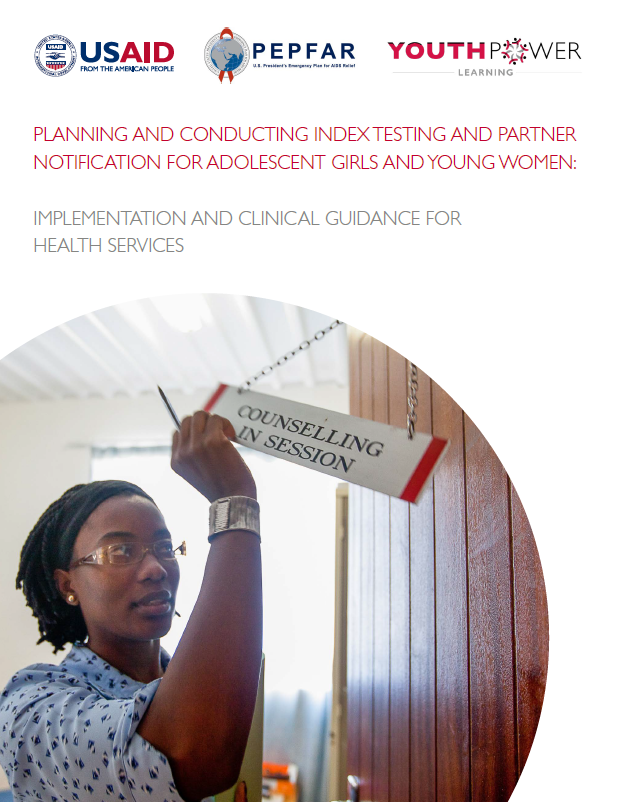 Planning and Conducting Index Testing and Partner Notification for Adolescent Girls and Young Women: Implementation and Clinical Guidance for Health Services
Planning and Conducting Index Testing and Partner Notification for Adolescent Girls and Young Women: Implementation and Clinical Guidance for Health Services
Providers who are interested in supporting their AGYW clients with PN, whether during index testing services or not, must also be equipped to perform IPV screening and safety checks with their clients. Providers may need support not only to address the specific needs of AGYW living with HIV, but also should be trained on how to conduct routine enquiry for IPV, including how to ask about experience or fear of sexual violence and how to respond when an AGYW discloses experience with or fear of violence. In addition, providers considering performing index testing services with young or adolescent clients, in particular with AGYW who have tested positive for HIV, should be trained in principles of providing rights-based, gender sensitive, adolescent- and youth-friendly reproductive health and family planning services.
This tool provides:
• Programmatic/service delivery considerations to be reviewed before implementing index testing services with AGYW;
• A provider job aid for index testing with AGYW, including integrated service delivery steps, scripts, and tools for documentation; and
• A toolbox with additional recommended training and guidance resources for providers working with adolescent clients.
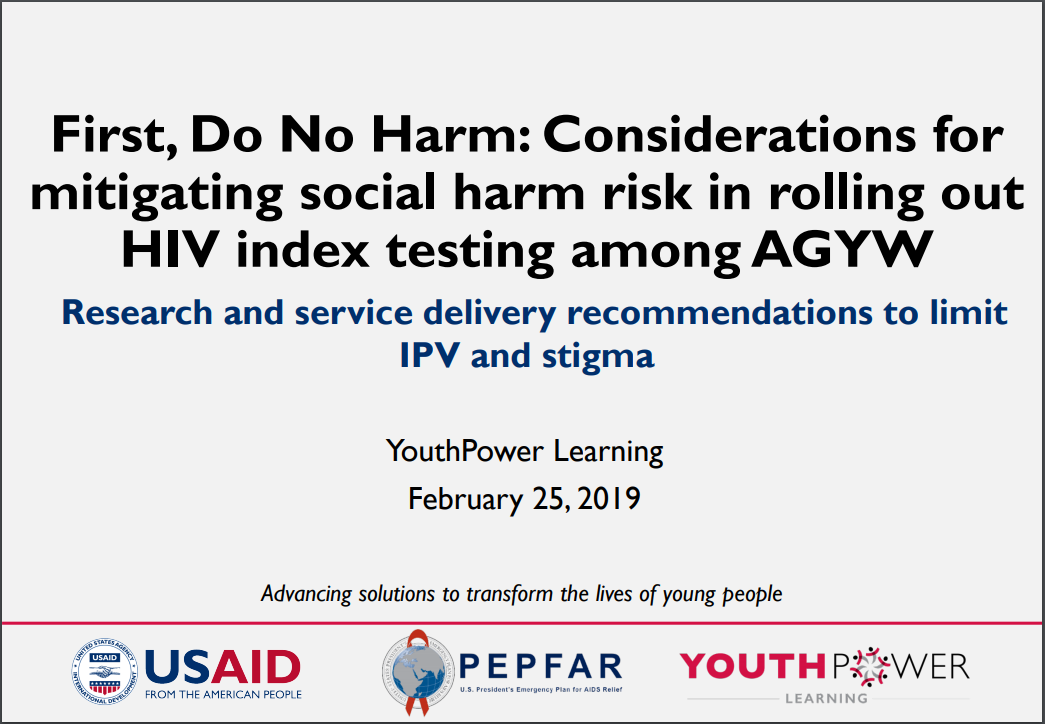 Webinar Recording and Slides - First, Do No Harm: Considerations for mitigating social harm risk in rolling out HIV index testing among AGYW
Webinar Recording and Slides - First, Do No Harm: Considerations for mitigating social harm risk in rolling out HIV index testing among AGYW
Partner notification as part of index testing has been widely accepted and adopted as a public health measure to speed progress in preventing the spread of HIV. However, the implementation of HIV partner notification needs careful consideration to minimize potential social harms and adverse events for adolescent girls and young women (AGYW) who may be at risk for violence or stigma related to their sexuality or HIV status. YouthPower Learning hosted a webinar to explore the relationship between HIV partner notification, index testing, and intimate partner violence (IPV) and its effects on AGYW living with HIV. The speakers presented practical programmatic considerations to address the needs of AGYW, new tools for providers interested in expanding index testing services, and discuss effective strategies to increase uptake of HIV testing and linkage to treatment.
